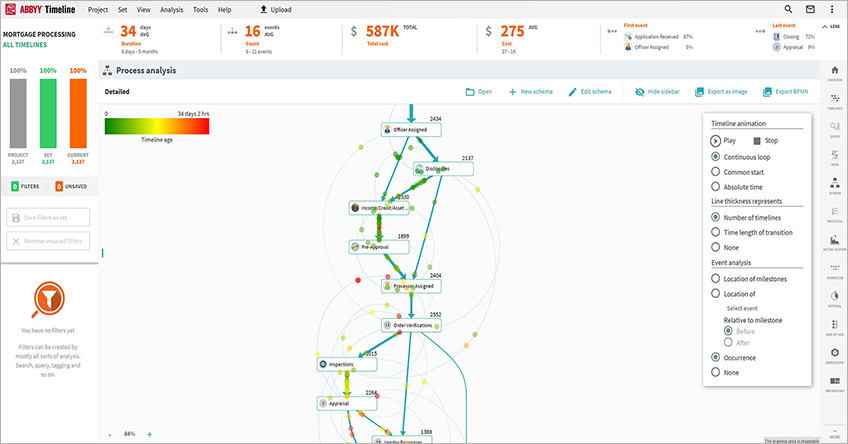Failproof Your Success with Intelligent Process Automation
Ryan Raiker
March 04, 2022

Stricter regulations, the increasing cost of labor, and pressures to improve customer satisfaction through increased speed of delivery are causing businesses to rethink how they do business. How can a company respond to all of these pressures while still remaining profitable?
Unfortunately, there are tedious tasks in every business, whether it’s purchase-to-pay, invoice processing, customer onboarding, or even something like assessing vendors. Traditionally, outsourcing has allowed companies to cut costs and improve efficiency for their support activities, but this is no longer enough of an advantage. Instead, automation of these tedious tasks has become the new industry standard to deliver the speed and quality that customers expect.
The future of work involves the combination of human and robotic automation assisting workers! The tasks employees perform today will see a huge change in the next 18–24 months. Robotic Process Automation (RPA) and process mining are transforming the way organizations get work done. Digital workers are working literally in unison with human workers.
Are you following these five critical best practices to ensure RPA success?
Businesses are generating an overwhelming volume of data. However, most of them are unable to use it effectively to improve productivity, and most struggle to understand how their business operates. Process mining can help.
How is your organization identifying high return on investment (ROI) opportunities for automation? Are you 100% sure that these choices are accurate? How can you derive more actionable insights from enterprise data to help your business partners react faster to new opportunities like RPA? How does your organization find the best process opportunities for automation? Is your organization still performing time and motion studies?

Benefits of process mining within the Intelligent Process Automation lifecycle include:
- Provide a complete overview of all processes end-to-end
- Identify high ROI processes suitable for RPA implementation
- Determine the best-case process flow/process path
- Provide ongoing process monitoring to detect problems, alerting, and ensure continuous improvement for sustainable process excellence of automation in the post-implementation phase.
Steps for successful Intelligent Process Automation
1. Ensure that there are benefits to automation
The overall goal of investing in automation is to streamline a process. However, like all business decisions, the benefits need to outweigh the potential costs, especially in something like RPA, where there can be high startup costs. But how can you quantify the benefits of automating your process?
With ABBYY Timeline by your side, you can use tools like Cost and Bottleneck Analysis to ensure that the time and cost of automating a specific process is worth it. Using these pre-built tools, you can quickly sort to see which steps in your process occur with the most frequency, the average time each step takes, the total time spent doing each step across all processes, and the percentage of total process time each step takes up. Additionally, you can easily see how much money a specific process costs through Cost Analysis. All of these components are essential for selecting what to automate.

Without full insight, you may not be selecting the right task to automate. Typically, a company will select a task that occurs the most frequently because it appears to be the lowest-hanging fruit. However, they may ignore opportunities to automate tasks that occur with less frequency but offer better ROI opportunities.
This means it is essential that you have a comprehensive understanding of all of the impacts of the process before starting your automation efforts. With this information in hand, it makes prioritizing RPA initiatives more quantifiable and allows you to make the best selection sooner based on data-backed insights.
2. Reduce risk and uncertainty
There are large risks associated with RPA implementation. Half of all automation efforts fail. Why? Too often the full process and all the downstream effects were never completely understood before starting the initiative.
There is a natural tendency to think that business processes are straightforward, especially when viewing them from a high level. This is why many people will go to RPA vendors saying, “I have a repetitive task I want to automate.” However, before they know it, they find that there are exceptions to the task that require additional review and oversight. This could be something as simple as an extra step required if someone lives in a certain state, but typically there are many other exceptions.
Because RPA simply follows a set of rules rather than thinking for itself, all instances in the task need to be accounted for and understood. When you start adding many exceptions, the RPA platform either will have to be coded with complicated variants that require a significant investment or simply will not work, at least not in the way you expect.

Even if the company does decide to proceed with creating complicated strings of code for the bot, the maintenance to upkeep the logic behind the bots will likely outweigh their expected benefits shortly after initial implementation. For example, if the exceptions continue to grow or change. Because of this, before starting an RPA initiative, take a step back, evaluate your current business process closely, and ensure that your processes are standardized and are a good fit for RPA. ABBYY Timeline process mining technology helps you understand your processes' real as-is state.
Process mining has become an essential step of RPA automation. Without it, you are unable to identify and prioritize opportunities, reduce risk, account for all instances, trigger bots, monitor, or trigger alerts to staff when deviations are detected. Starting with process mining guarantees for a smoother, more cost-effective RPA implementation for the life of your automation project.

